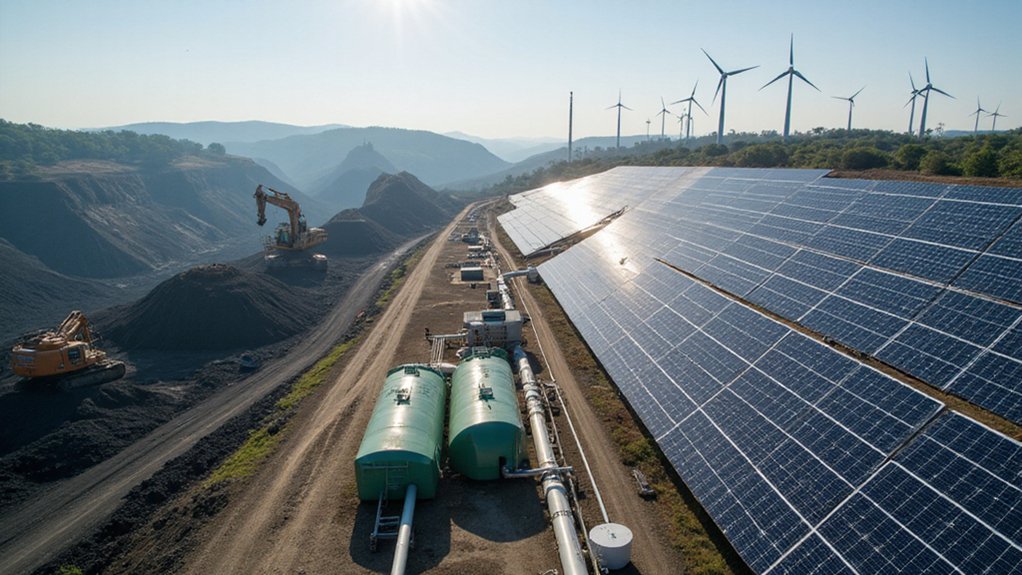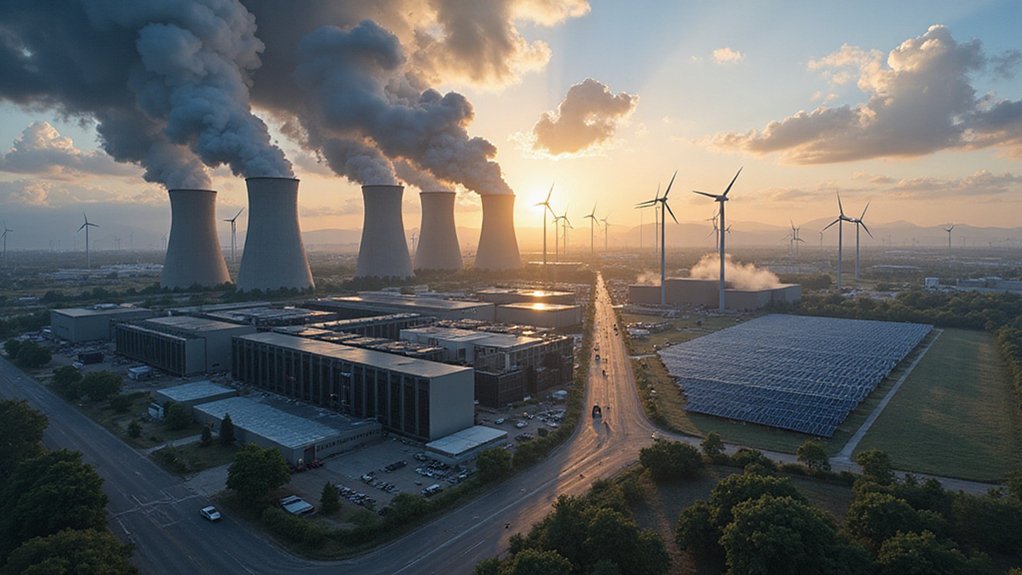Coal India Limited (CIL), the world’s largest coal producer, is making a dramatic shift toward clean energy with a massive $3 billion investment in renewable projects. This historic move represents one of the world’s largest corporate pivots from fossil fuels to clean energy. The investment aligns with India’s national goal to reach net-zero carbon emissions by 2070.
The world’s largest coal producer bets $3 billion on clean energy in a historic pivot from fossil fuels.
CIL has signed a Memorandum of Understanding with AM Green to supply renewable energy to their upcoming green ammonia plants. The agreement outlines a 4,500 MW capacity mix of solar and wind power. Solar energy will provide between 2,500 and 3,000 MW, while wind energy will contribute 1,500 to 2,000 MW.
This partnership will support AM Green’s ambitious target of producing 5 million tonnes of green ammonia annually by 2030. The renewable energy will power the manufacturing process that typically relies on fossil fuels. When completed, it will rank among the world’s largest green ammonia facilities.
The mix of solar and wind energy was chosen to guarantee steady, reliable power supply for the ammonia production. The pumped hydro storage systems will be integrated to ensure continuous power availability. The projects will be developed across multiple Indian states to optimize resource availability and grid integration. This approach helps address one of the main challenges of renewable energy – consistent supply. The strategy mirrors Australia’s success, where renewable energy supply has reached over 39% of electricity generation while maintaining grid reliability.
India is rapidly expanding its clean energy capacity with plans to reach 500 GW of renewable energy by 2030, up from the current 172 GW. However, the country is also increasing its coal power capacity by 80 GW to meet growing electricity demand.
The collaboration between CIL, a state-owned enterprise, and the private sector is seen as vital for achieving the necessary scale. The non-binding agreement paves the way for a formal contract that will solidify the partnership details. The project faces potential challenges common in India’s renewable sector, including delays in regulatory clearances and finalizing power purchase agreements.
This partnership may serve as a model for other fossil fuel companies adapting to green energy. It’s expected to attract additional international investments in India’s growing renewables sector as the country positions itself as a future leader in green hydrogen and ammonia exports.
References
- https://www.rechargenews.com/energy-transition/coal-giant-nears-signing-one-of-worlds-largest-renewables-deals/2-1-1817726
- https://www.indianewsnetwork.com/en/20250509/coal-india-to-supply-4-500-mw-renewable-energy-for-green-ammonia-projects
- https://energy.economictimes.indiatimes.com/amp/news/coal/coal-india-to-set-up-3-billion-worth-clean-energy-projects-to-boost-renewable-heft/120997614
- https://www.worldenergynews.com/news/coal-india-will-invest-billion-clean-energy-760971
- https://www.drroyspencer.com/2025/03/hey-epa-why-not-regulate-water-vapor-emissions-while-you-are-at-it/









